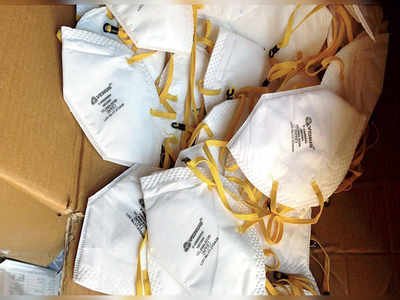Do you want to know the differences between an N95 mask, a surgical mask, and a homemade mask? Before you continue reading, it is important that you know that the first two are basic supplies used (and super necessary) in the health field to protect patients and health workers and that the second are those that people must use when they leave their homes to avoid infecting and being infected.
Also known as NIOSH certified N95 respirators. The N designation means it does not filter oils, and 95 that it filters up to 95% of airborne particles. There are different types of N95 masks depending on the size of the particles to be filtered, there are for industrial use, for medicinal use, etc. The N95 1870 is the one used in medicine.
The N95 Mask is almost exclusively used by health workers due to their greater exposure to respiratory secretions and therefore greater risk of contracting infections that spread through this route. It has a specific design whose hermetic seal against the skin provides important respiratory protection by not allowing particles (especially small ones) found in the air to pass through.
This mask protects the wearer and the environment, not allowing passage in both directions. In Europe the name changes and they are classified into FFP1, FFP2 and FFP3 depending on their filtration capacity.
Generally used by operating room personnel for surgical procedures. Fluid resistant, the surgical mask provides protection against large drops, splashes, or aerosols of body fluids or other dangerous liquids. It does NOT provide the user with a reliable level of protection against inhalation of smaller airborne particles and is not considered respiratory protection. Protects the environment from the user's respiratory emissions. For this reason, it is also applied in patients with respiratory symptoms. To reduce the spread of viral particles.
At that time, it constitutes an alternative for community use and its manufacture is made with common materials at low cost, such as cotton, stabilizer, waterproof fabrics. Today, homemade masks are part of public health measures in addition to social distancing and hygiene measures.
Although this term is also used as a synonym for mask, any element used to cover the nose and mouth is called a mask, so it can also be a handkerchief, scarf or towel wrapped around the face.
In the case of homemade masks, the essential requirement is that the wearers fit them well to the face and can be easily washed and reused. It is also recommended to add a disposable layer of toilet paper or a tissue inside.
Finally, it is important that both the homemade mask and the mask must be removed from the back (strips or elastic), never touch them on the outside or inside and discard them or put them to wash if they are made of fabric or another washable material.

CDC, WHO, Oxford Centre for Evidence-Based Medicine, New England Journal of Medicine, Norwich School of Medicine, and many other medical professionals conclude masks offer no significant protection from covid.
https://steemit.com/mask/@theallstarr/masks-are-ineffective-70-year-meta-study-concludes
Downvoting a post can decrease pending rewards and make it less visible. Common reasons:
Submit